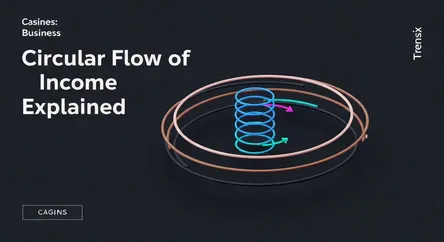Business
Circular Flow of Income Explained

Discover the circular flow of income, the economic model showing how money moves between households and firms through production, income, and spending.
What is it?
The circular flow of income is a fundamental economic model that illustrates how money moves through an economy. In its simplest form, it shows the continuous exchange between two key players: households and firms. Households provide firms with factors of production—labor, land, and capital. In return, firms pay households income in the form of wages, rent, and profits. Firms then use these factors to create goods and services. Households use their income to purchase these goods and services from firms, which completes the loop. This model visualizes the interdependence of production, income, and expenditure in an economy.
Why is it trending?
This concept often trends during discussions about economic health, stimulus packages, or changes in tax policy. When news outlets report on Gross Domestic Product (GDP), they are essentially measuring the size of this flow. Understanding the circular flow helps policymakers and analysts predict how interventions, such as government spending (an injection) or increased savings (a leakage), will impact overall economic activity. As global economies face challenges like inflation or recession, this foundational model becomes a key tool for explaining complex financial events to the public.
How does it affect people?
The circular flow directly relates to personal finance and well-being. It explains the source of an individual's income (payment for their labor or capital) and how their spending fuels business revenue, which in turn creates more jobs. When the flow is strong, unemployment is low and wages tend to rise. However, if households reduce spending, firms earn less revenue, potentially leading to layoffs and slowing the entire economy. It highlights how individual financial decisions, when aggregated, have a powerful impact on national economic stability and prosperity.